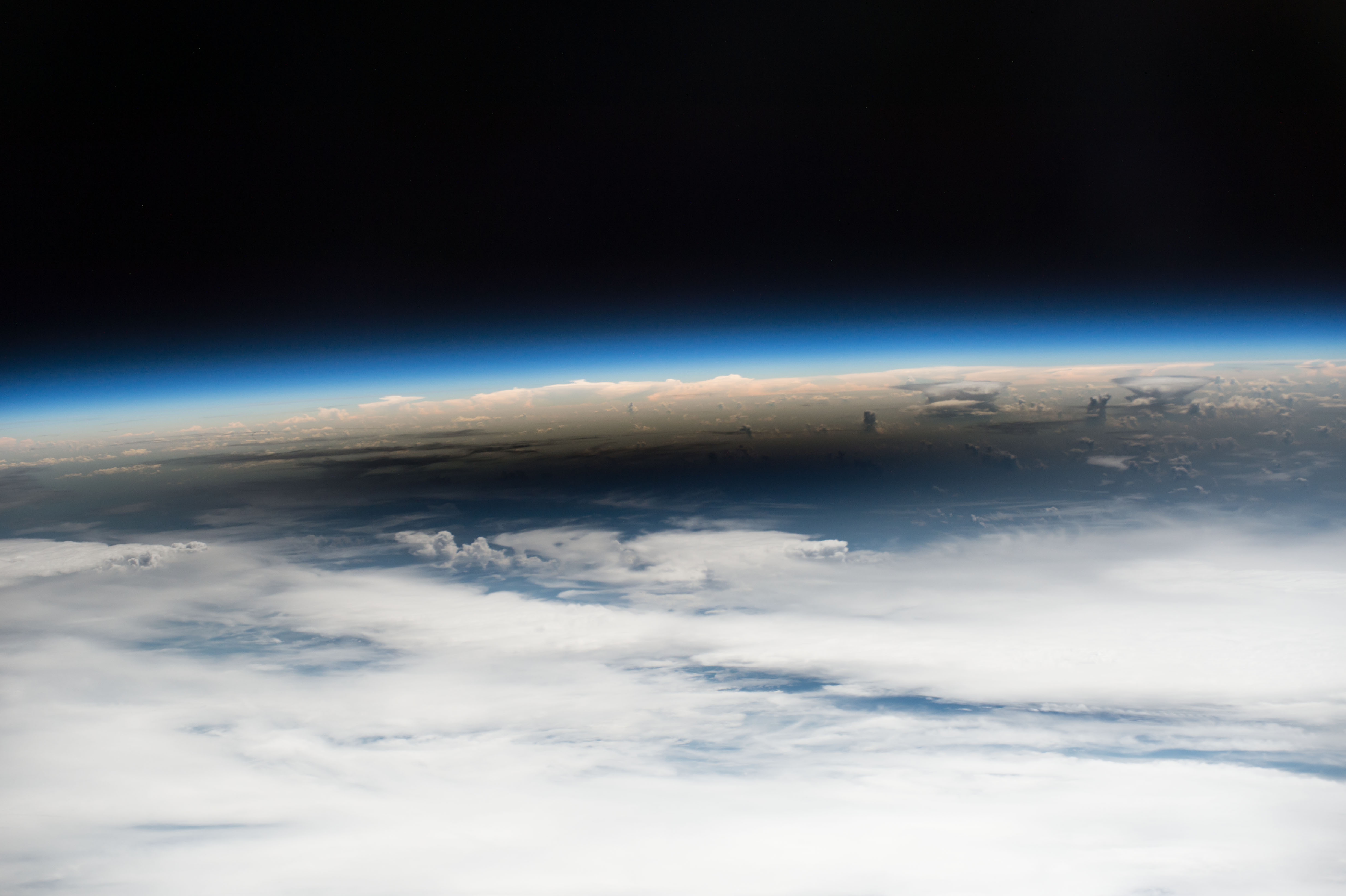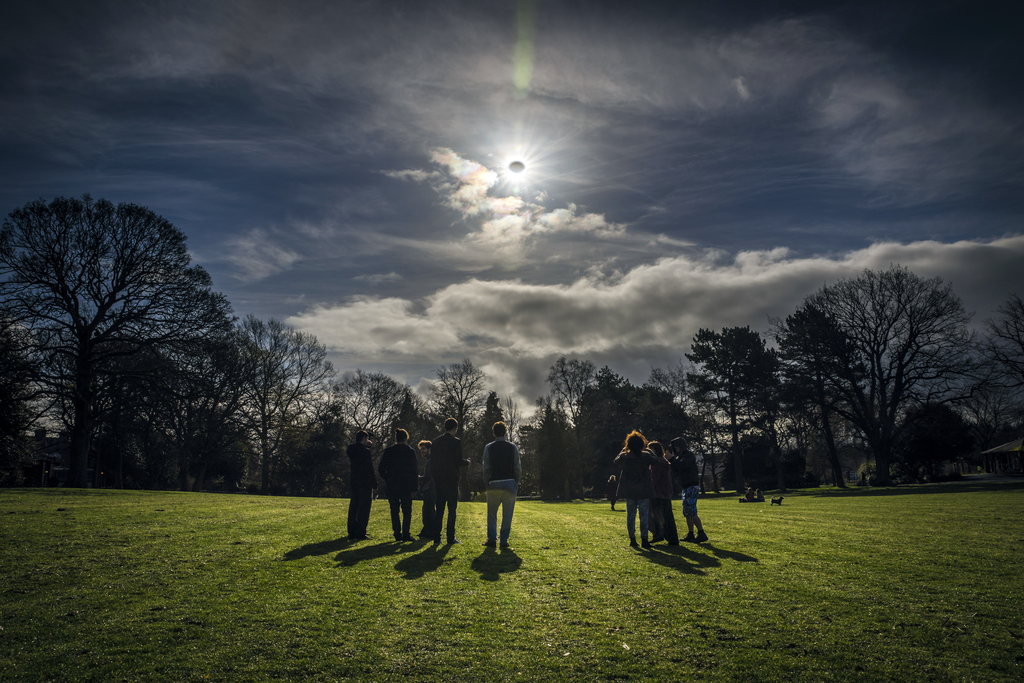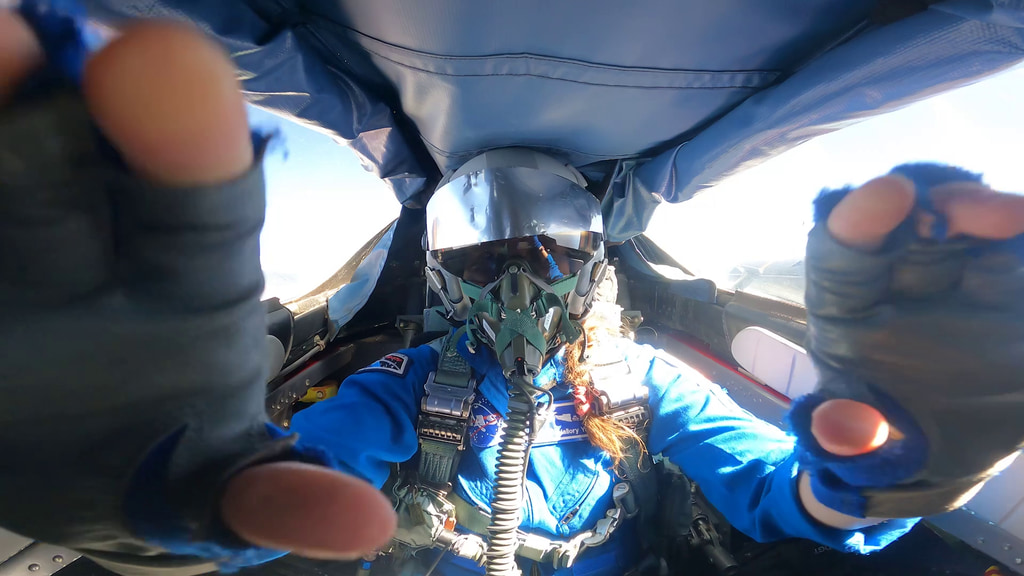NASA Eclipse Imagery

As millions of people across the United States experienced a total eclipse as the umbra, or Moon’s shadow passed over them, only six people witnessed the umbra from space. Viewing the eclipse from orbit were NASA’s Randy Bresnik, Jack Fischer and Peggy Whitson, ESA (European Space Agency’s) Paolo Nespoli, and Roscosmos’ Commander Fyodor Yurchikhin and Sergey Ryazanskiy. The space station crossed the path of the eclipse three times as it orbited above the continental United States at an altitude of 250 miles. Credit: NASA

As millions of people across the United States experienced a total eclipse as the umbra, or Moon’s shadow passed over them, only six people witnessed the umbra from space. Viewing the eclipse from orbit were NASA’s Randy Bresnik, Jack Fischer and Peggy Whitson, ESA (European Space Agency’s) Paolo Nespoli, and Roscosmos’ Commander Fyodor Yurchikhin and Sergey Ryazanskiy. The space station crossed the path of the eclipse three times as it orbited above the continental United States at an altitude of 250 miles. Credit: NASA

This composite image, made from seven frames, shows the International Space Station, with a crew of six onboard, as it transits the Sun at roughly five miles per second during a partial solar eclipse, Monday, Aug. 21, 2017 near Banner, Wyoming. Onboard as part of Expedition 52 are: NASA astronauts Peggy Whitson, Jack Fischer, and Randy Bresnik; Russian cosmonauts Fyodor Yurchikhin and Sergey Ryazanskiy; and ESA (European Space Agency) astronaut Paolo Nespoli. A total solar eclipse swept across a narrow portion of the contiguous United States from Lincoln Beach, Oregon to Charleston, South Carolina. A partial solar eclipse was visible across the entire North American continent along with parts of South America, Africa, and Europe. Credit: NASA/Joel Kowsky

A ground-based image of the total solar eclipse on Aug. 21, 2017 (gray, middle ring), is superimposed over an image of the Sun’s atmosphere, called the corona (red, outermost ring), as seen by ESA (the European Space Agency) and NASA’s Solar and Heliospheric Observatory (SOHO), which watches the Sun from space. At center is an image of the sun’s surface as seen by NASA’s Solar Dynamics Observatory in extreme ultraviolet wavelengths of light.
During a total solar eclipse, ground-based telescopes can observe the lowest part of the solar corona in a way that can’t be done at any other time, as the dim corona is normally obscured by the bright light of the Sun. The structure in the ground-based corona image — defined by giant magnetic fields sweeping out from the Sun’s surface — can clearly be seen extending into the outer image from the space-based telescope. The more scientists understand about the lower corona, the more they can understand what causes the constant outward stream of material called the solar wind, as well as occasional giant eruptions called coronal mass ejections.
Innermost image: NASA/SDO
Ground-based eclipse image: Jay Pasachoff, Ron Dantowitz, Christian Lockwood and the Williams College Eclipse Expedition/NSF/National Geographic
Outer image: ESA/NASA/SOHO

Phases of totality of the Aug. 21, 2017, total solar eclipse observed from Salem, Oregon by the Williams College Expedition. Credit: Jay Pasachoff, Ron Dantowitz, Christian Lockwood, and the Williams College Eclipse Expedition/NSF/National Geographic

This composite image shows the progression of a total solar eclipse over Madras, Oregon on Monday, Aug. 21, 2017. A total solar eclipse swept across a narrow portion of the contiguous United States from Lincoln Beach, Oregon to Charleston, South Carolina. A partial solar eclipse was visible across the entire North American continent along with parts of South America, Africa, and Europe. Credit: NASA/Aubrey Gemignani

This composite image shows the progression of a partial solar eclipse over Ross Lake, in Northern Cascades National Park, Washington on Monday, Aug. 21, 2017. A total solar eclipse swept across a narrow portion of the contiguous United States from Lincoln Beach, Oregon to Charleston, South Carolina. A partial solar eclipse was visible across the entire North American continent along with parts of South America, Africa, and Europe. Credit: NASA/Bill Ingalls

The total phase of the Aug. 21, 2017, total solar eclipse as seen from Casper, Wyoming. Credit: Keon Gibson

A composite image of the Aug. 21, 2017, total solar eclipse as seen from Casper, Wyoming. Credit: Keon Gibson

A total solar eclipse is seen on Monday, Aug. 21, 2017, from onboard a NASA Armstrong Flight Research Center’s Gulfstream III 25,000 feet above the Oregon coast. A total solar eclipse swept across a narrow portion of the contiguous United States from Lincoln Beach, Oregon to Charleston, South Carolina. Credit: NASA/Carla Thomas

This full-disk geocolor image from the GOES-16 satellite shows the shadow of the Moon covering a large portion of the northwestern United States on Aug. 21, 2017. Credit: NOAA/NASA

On Aug. 21, 2017, many Americans saw day turn temporarily to night as the Moon passed between the Sun and the Earth to create a total solar eclipse. As people in the 70-mile-wide (110-kilometer-wide) path of totality looked up and saw blinding light replaced by a dark circle and the Sun’s wispy corona, NASA Earth-observing satellites captured imagery of the Moon’s shadow as it raced eastward over the continental United States.
The Moderate Resolution Imaging Spectroradiometer (MODIS) sensor on the Terra satellite captured this mosaic comprised of data collected at three different times. The right third of the image shows the eastern United States at about 12:10 p.m. Eastern Time (16:10 Universal Time), before the eclipse had begun. The middle part was captured at about 12:50 p.m. Central Time (17:50 Universal Time), when the eclipse was in progress in the center of the country. The left third of the image was collected at about 12:30 p.m. Pacific Time (19:30 Universal Time), after the eclipse had ended. Terra has a polar orbit and the MODIS sensor collects imagery in swaths that are roughly 1,450 miles (2,330 kilometers) wide.
Credit: NASA Earth Observatory images by Joshua Stevens and Jesse Allen, using MODIS data from the Land Atmosphere Near real-time Capability for EOS (LANCE) and EOSDIS/Rapid Response

As millions of Americans watched the total solar eclipse that crossed the contiguous United States on Aug. 21, 2017, the international Hinode solar observation satellite captured its own images of the awe-inspiring natural phenomenon as it orbited the planet.
Hinode is a joint endeavor by the Japan Aerospace Exploration Agency, the National Astronomical Observatory of Japan, the European Space Agency, the United Kingdom Space Agency and NASA. Credit: JAXA/NASA/SAO/NAOJ

The Aug. 21, 2017, total solar eclipse as seen by the people attending the viewing event at the Oregon State Fairgrounds, Salem, Oregon. Credit: NASA/Dominic Hart

The Aug. 21, 2017, total solar eclipse douses Umatilla National Forest in shadow, rimming the horizon with a 360 degree sunset. Credit: NASA/Mara Johnson-Groh

The solar corona shines bright high above a juniper tree in Umatilla National Forest during the Aug. 21, 2017, total solar eclipse. Credit: NASA/Mara Johnson-Groh

Employees and visitors at NASA's Jet Propulsion Laboratory stopped to watch the Aug. 21, 2017, solar eclipse on Aug. 21, 2017. Credit: NASA/Josh Krohn

A view of the Aug. 21, 2017, total solar eclipse from Madras, Oregon. Credit: NASA/Gopalswamy

The reddish chromosphere is visible in this view of the Aug. 21, 2017, total solar eclipse from Madras, Oregon. Credit: NASA/Gopalswamy

The diamond ring signaling the end of totality is visible in this image of the Aug. 21, 2017, total solar eclipse from Madras, Oregon. Credit: NASA/Gopalswamy

A radiant “diamond” of sunlight is seen in the moments after totality during the total solar eclipse on Aug. 21, 2017. The effect is seen in the few seconds just before and after totality when there is a single point of sunlight shining through a valley on the Moon. In this image, from Jefferson City, Missouri, the Sun’s corona creates a brilliant halo and forms a ring of light around the edge of the moon.
A total solar eclipse swept across a 70-mile-wide path of the contiguous United States for the first time in 99 years. During the rare celestial event, the moon’s shadow moved from west to east creating a diagonal path of totality in 14 states from Oregon to South Carolina. Spectators along the path of totality experienced more than two minutes of twilight in the middle of the day. Observers in the remainder of North America, and parts of South America, Africa and Europe saw a partial solar eclipse where the Moon covered part of the Sun’s disk.
Credit: NASA/Rami Daud, Alcyon Technical Services
Credit: "Total Solar Eclipse 2012 Education Resources." Total Solar Eclipse 2012 Education Resources. Astronomical Association of Queensland; Science Teachers Association of Queensland, 2012. Web

The Baily’s Beads effect is seen as the Moon makes its final move over the Sun during the total solar eclipse on Monday, Aug. 21, 2017, above Madras, Oregon. A total solar eclipse swept across a narrow portion of the contiguous United States from Lincoln Beach, Oregon to Charleston, South Carolina. A partial solar eclipse was visible across the entire North American continent along with parts of South America, Africa, and Europe. Credit: NASA/Aubrey Gemignani
Credits
Please give credit for this item to:
NASA's Goddard Space Flight Center
-
Photographers
- Rami Daud (Alcyon Technical Services)
- Aubrey Gemignani (ICP Systems)
- Keon Gibson (Self)
- Natchimuthuk Gopalswamy (NASA/GSFC)
- Dominic Hart (Howard Video Productions)
- Bill Ingalls (ICP Systems)
- Mara Johnson-Groh (Wyle Information Systems)
- Joel Kowsky (ICP Systems)
- Josh Krohn (JPL)
- Carla Thomas (Arcata)
-
Technical support
- Aaron E. Lepsch (ADNET Systems, Inc.)
Release date
This page was originally published on Thursday, August 31, 2017.
This page was last updated on Wednesday, May 3, 2023 at 1:47 PM EDT.
![Music Credit: “Corals Instrumental” by Marc Burh [GEMA], Marek Nichel [GEMA] via Universal Production MusicAdditional photographs and footage: Unsplash, Videvo](/vis/a010000/a014500/a014557/14557_EclipsePhotoTips_Thumbnail.png)




![Watch this video on the NASA Goddard YouTube channel.Complete transcript available.Music credit: "Creativity" by Max van Thun [GEMA] from Universal Production Music.](/vis/a010000/a014400/a014427/Thumbnail_01.jpg)